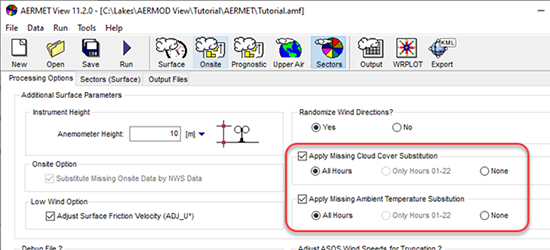Online AERMOD Course with CASANZ – February 21-24, 2023 |
 |
Together with the Clean Air Society of Australia & New Zealand (CASANZ), we will hold an online AERMOD air dispersion modeling course. Training will take place in four, 4-hour webinars from February 21 to 24, 2023 from 11:00am to 3:00pm (Australian Eastern Daylight Time) daily.
Register now before space is gone!
Note: The above course will be based specifically on regulations for the Australia/New Zealand region.
|
|
Online AERMOD Course – Mar 21-22, 2023 |
 |
Our team will present 2 days of online AERMOD training on March 21 and 22, 2023 from 8:30am to 5:00pm (Central Time – Chicago, USA).
Register today!
Note: Due to the immense popularity of our online courses and small class sizes, we recommend registering and making payment as soon as possible.
|
|
Lakes Environmental Closed for Family Day Holiday |
Lakes Environmental's Waterloo office will be closed on Monday, February 20, 2023 to observe Ontario's Family Day holiday. Our Dallas office will remain open on this day. If you have any needs during that time, please e-mail us at support@webLakes.com and we will respond to your inquiry as soon as possible.
|
|
UPCOMING TRAINING COURSES |
|

|
MODELING TIP |
Data Substitutions in AERMET |
|
When conducting an air dispersion modeling analysis, it is very important that the meteorological data quality is as high as possible. AERMET – the meteorological pre-processor for the AERMOD dispersion modeling system – contains internal options which can boost data quality by filling short gaps of missing cloud cover and temperature data.
AERMET utilizes linear interpolation for gaps of 1-2 hours for these parameters. Application of the substitution routines is done as follows:
- Substitutions are applied by default for applications involving only one input pathway (SURFACE or ONSITE)
- If multi-level temperature data is input via the ONSITE pathway, substitution is only applied for values from the same measurement level.
- For applications involving multiple pathways (SURFACE and ONSITE combined):
- Substitutions are applied by default if the parameter is only available from one pathway.
- If the parameter is available in both pathways, the substitution will not be made unless explicitly enabled by the modeler.
Supposing a modeler uses AERMET to process data from an onsite weather station (via the ONSITE pathway) and also inputs data from a nearby National Weather Service (NWS) station (via the SURFACE pathway). The onsite station measures only temperature and wind data while the NWS site measures temperature, wind, cloud cover, precipitation, and pressure data. In this example, AERMET would apply cloud cover substitution by default, but the temperature substitution would not be applied by default.
In AERMET View, modelers can bypass the default substitution methods described above via the Processing Options tab as shown below.

AERMET View Version 11.2.0 allows users to make the following selections:
- Apply Missing Cloud Cover/Temperature Substitution boxes are unchecked by default. This means AERMET will apply the methods as described above in this Modeling Tip.
- Checking either box allows users to explicitly enable (All Hours) or disable (None) the substitution routines.
- If modeling with AERMET 21112 or earlier, the “Only Hours 01-22” option utilizes a persistence option in place of interpolation for hours at the end of the day.
Modelers should be aware that enabling substitution methods when processing data from multiple pathways may result in interpolation between data values that originate from separate stations.
|
|

|
ENVIRONMENTAL NEWS ARTICLES |
AI to Monitor Changes to Globally Important Glacier |
January 9, 2023 - Scientists have developed AI to track the development of crevasses - or fractures - on the Thwaites Glacier ice tongue in west Antarctica.
Read more → |
|
Weather Whiplash |
January 5, 2023 - December 2022 and January 2023 brought winter weather whiplash to the central and eastern United States.
Read more → |
|
|
|
UPCOMING CONFERENCES |
2023 Conference Schedule |
|
TCEQ Environmental Trade Fair and Conference (ETFC)
May 16-17, 2023 | Austin, TX | Booth # 401
Learn more →
|
|
Air & Waste Management Association’s 116th Annual Conference & Exhibition
June 5-8, 2023 | Orlando, FL | Booth # 303
Learn more →
|
|
|
LAKES SOFTWARE GROUP OF COMPANIES
|
 |
1-170 Columbia St. W.
Waterloo, ON N2L 3L3
View Online
This newsletter contains information gleaned from various sources on the web, with complete links
to the sources cited. Organizations cited are in no way affiliated with Lakes Environmental Software.
For more information, please visit our web site at: www.webLakes.com.
All comments and suggestions are welcome. You can e-mail us at: support@webLakes.com.
Privacy Policy |
|
| | |
